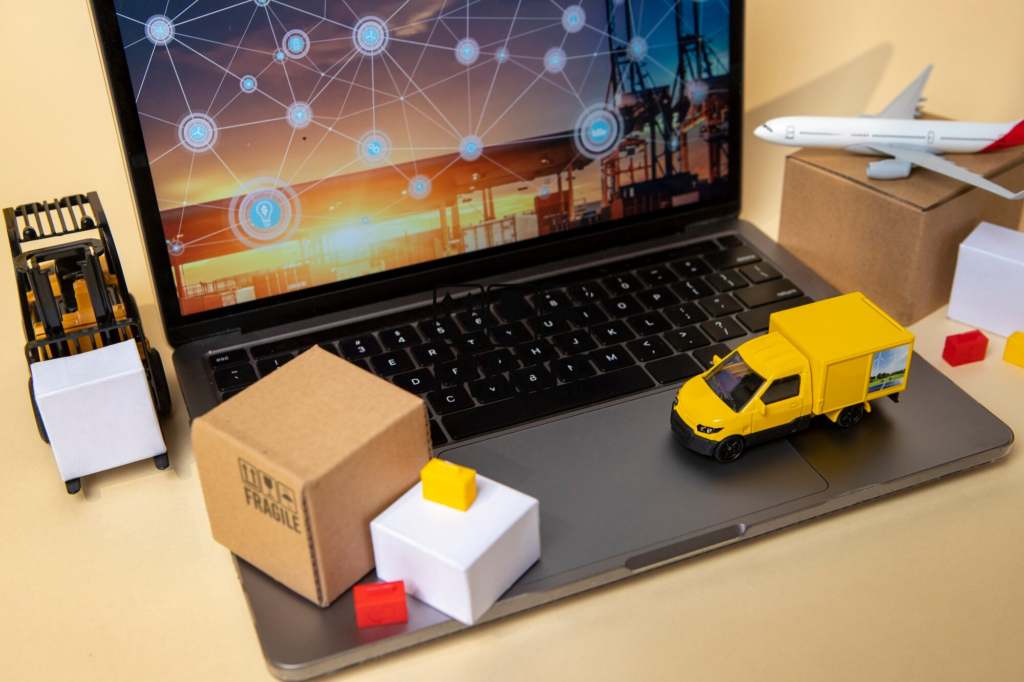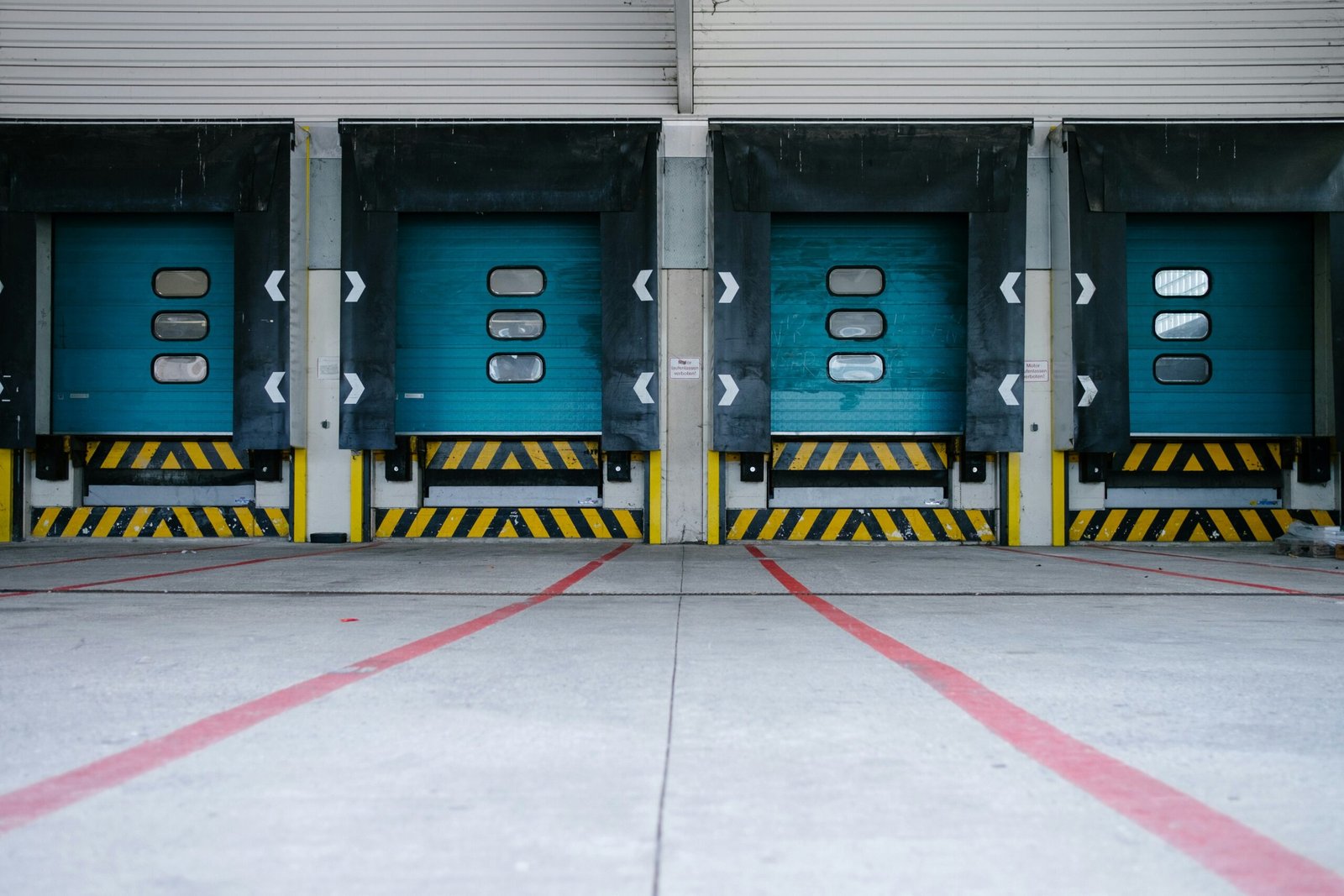Table of Contents
- Introduction to IoT in Logistics
- Key IoT Technologies Shaping Logistics
- Benefits of IoT for B2B Logistics
- Challenges of Implementing IoT in Logistics
- Case Studies of IoT in Action
- Future Trends in IoT and Logistics
- The Role of Data in IoT-Enabled Supply Chains
- Strategies for Successful IoT Implementation
- Conclusion
Introduction to IoT in Logistics
The Internet of Things (IoT) has emerged as a transformative force in various industries, with logistics and supply chains being at the forefront of this revolution. IoT refers to the network of interconnected devices and sensors that communicate and exchange data over the internet. In the context of logistics, IoT technologies facilitate real-time tracking and monitoring of assets, enabling organizations to streamline operations and enhance decision-making processes.
Within the logistics sector, the integration of IoT enables businesses to connect various components of their operations seamlessly. For instance, sensors attached to vehicles, containers, or pallets can provide precise information about location, temperature, humidity, and even the condition of goods during transport. This level of connectivity not only enhances visibility across the supply chain but also aids in preventing losses and delays, which are often critical in B2B operations.
The significance of IoT in logistics extends beyond mere tracking; it also encompasses predictive analytics, which allows companies to forecast demand and optimize inventory management. By leveraging IoT data, organizations can analyze patterns and trends, leading to more informed decisions that align with customer expectations. Consequently, this enhances overall efficiency and service delivery in B2B logistics.
Moreover, IoT technologies play a vital role in improving collaboration among supply chain partners. With enhanced data sharing capabilities, businesses can work together more effectively, gaining insights into each other’s operations. This interconnectedness fosters a more agile response to market fluctuations and customer needs, providing a competitive edge in an increasingly demanding landscape.
In summary, the adoption of IoT in logistics symbolizes a pivotal shift toward greater efficiency, transparency, and responsiveness in B2B supply chains. As these technologies continue to evolve, their impact on logistics operations is likely to grow, paving the way for a future characterized by enhanced connectivity and data-driven strategies.
Key IoT Technologies Shaping Logistics
The Internet of Things (IoT) is fundamentally altering the logistics and supply chain landscapes by introducing a variety of advanced technologies that enhance efficiency, accuracy, and customer service. Among these technologies, sensors play a pivotal role. They are embedded within various assets such as freight containers and delivery vehicles, allowing for continuous monitoring of temperature, humidity, and location. This real-time data ensures that perishable goods are transported under optimal conditions, reducing spoilage and improving overall quality control.
Another significant technology is Radio Frequency Identification (RFID) tags. These tags have revolutionized inventory management and asset tracking. By employing RFID, companies can automate the identification and tracking of products throughout the supply chain, improving accuracy and reducing human error. This technology not only expedites inventory counts but also enhances visibility into inventory levels, allowing for better demand forecasting and inventory management strategies.
GPS tracking systems are another crucial IoT component that enhances logistic operations. This technology provides real-time location data for vehicles and shipments, significantly improving route optimization and fleet management. By analyzing traffic patterns and delivery schedules, businesses can reduce fuel consumption, minimize delays, and achieve timely deliveries, which is particularly important in today’s fast-paced market.
Furthermore, real-time analytics plays an integral role in leveraging the data collected from various IoT devices. Organizations can analyze vast amounts of data to gain insights into operational performance and customer behavior. Using these insights, businesses can make informed decisions to enhance their logistics operations, resulting in cost reductions and improved customer satisfaction. The integration of these IoT technologies demonstrates not just an evolution in logistics but a revolution that builds a foundation for future advancements in the industry.
Benefits of IoT for B2B Logistics
The Internet of Things (IoT) has proven to be a game changer for the B2B logistics and supply chain sectors. By integrating IoT technology, businesses can gain significant advantages that enhance their operational efficiency and overall effectiveness. One of the primary benefits of IoT in this domain is improved asset tracking. With IoT-enabled devices, companies can monitor their assets in real time, allowing them to know the precise location and condition of their goods at any given moment. This level of visibility reduces the risk of loss and theft, ultimately leading to higher asset utilization.
Another notable advantage is enhanced inventory management. IoT sensors can provide detailed information about inventory levels, enabling businesses to make data-driven decisions. Accurate tracking of stock levels means that companies can avoid overstocking or stockouts, which in turn optimizes working capital and ensures that customers receive their orders without delay. Additionally, this technology can facilitate just-in-time inventory practices, further improving efficiency.
Cost reduction is another significant benefit associated with IoT adoption in logistics. By automating routine tasks and improving operational workflows, businesses can decrease labor costs and mitigate human error. Moreover, predictive analytics powered by IoT data can assist companies in forecasting demand more accurately, reducing unnecessary expenditures and ensuring a more streamlined supply chain operation.
Lastly, IoT enhances transparency across the entire supply chain. With digital tracking and real-time data reporting, stakeholders have access to critical information regarding the status and condition of shipments. This transparency not only fosters trust among partners but also empowers companies to respond swiftly to disruptions or unforeseen changes within the logistics landscape. In summary, the integration of IoT into B2B logistics facilitates improved asset tracking, optimizes inventory management, reduces costs, and enhances transparency, ultimately reshaping the framework of supply chain operations.

Challenges of Implementing IoT in Logistics
The integration of Internet of Things (IoT) solutions in logistics presents a unique set of challenges that companies must navigate to fully realize the potential benefits. One significant hurdle is data security. With the rise of connected devices comes an increased risk of cyberattacks and data breaches. Logistics companies often handle sensitive information, such as shipment details and customer data, making them attractive targets for malicious actors. Ensuring robust cybersecurity measures are in place is critical, but can be complex and costly.
Another major challenge faced by businesses when implementing IoT in logistics is the high initial investment required. The deployment of IoT devices, networking infrastructure, and software solutions entails significant financial resources. Many companies may find themselves weighing the potential return on investment (ROI) against these upfront costs. For smaller firms, these expenses can be particularly daunting, potentially limiting their ability to adopt IoT technologies, thus widening the gap between them and larger competitors who can afford to innovate.
Additionally, the complexity of integrating IoT solutions with existing systems poses another significant barrier. Many logistics companies operate with legacy systems that may not easily accommodate new technologies. Ensuring seamless interoperability requires considerable planning, technical expertise, and often, custom development. This complexity can result in increased project timelines and the possibility of operational disruptions during the transition period, which some firms may view as too risky.
Moreover, companies must acknowledge the challenges associated with data management and analytics. An abundance of data generated by IoT devices does not automatically translate into actionable insights. Firms must invest in the right analytics tools and develop strategies to effectively leverage this data to enhance decision-making processes and improve supply chain efficiency. Addressing these multifaceted challenges is essential for organizations seeking to adopt IoT solutions in their logistics operations successfully.
Case Studies of IoT in Action
The implementation of Internet of Things (IoT) technologies within logistics and supply chain management has yielded significant benefits across various industries. This section showcases real-world examples highlighting measurable improvements and return on investment (ROI) achieved by businesses that have integrated IoT into their operations.
One prominent example is DHL, a global leader in logistics. The company has adopted IoT-enabled devices for real-time tracking of packages. By equipping their shipments with smart sensors, DHL improved visibility in their supply chain. These sensors collect data on temperature, humidity, and location, providing valuable insights throughout the shipping process. As a result, DHL reduced operational costs by 10% and enhanced delivery reliability, which led to a marked increase in customer satisfaction.
Another example is Maersk, which has embraced IoT technology through the implementation of smart containers. By utilizing sensors within their shipping containers, Maersk can monitor container conditions, such as temperature and pressure, ensuring that sensitive cargo remains in optimal conditions. This initiative has enabled Maersk to decrease cargo loss by 5% and improve the overall efficiency of their supply procedures, resulting in substantial cost savings and enhanced customer trust in their services.
In the food industry, Nestlé has leveraged IoT to enhance traceability within their supply chain. By embedding RFID tags in their products, Nestlé can monitor the entire lifecycle of goods from production to point-of-sale. This level of transparency not only meets regulatory compliance but also improves inventory accuracy, reducing waste and fostering sustainable practices. Studies have shown that Nestlé decreased spoilage rates by 15%, demonstrating the effectiveness of IoT in optimizing inventory management.
These case studies illustrate the transformative potential of IoT technologies in logistics and supply chains. As more companies begin to adopt such innovations, the measurable improvements and ROI will likely serve as a compelling incentive for others within the industry to follow suit.
Future Trends in IoT and Logistics
The Internet of Things (IoT) is poised to redefine logistics and supply chain management significantly. One of the most exciting emerging trends is the rise of autonomous vehicles. These self-driving technologies allow for streamlined delivery processes and reduced human error, which can lead to increased efficiency and cost savings. Companies are investing heavily in this area to enhance their logistics operations, and prototypes are already being tested in controlled environments. By integrating IoT sensors with autonomous vehicles, real-time data can be communicated, optimizing route planning and delivery schedules.
Another critical trend is the advancement of predictive analytics powered by IoT data. By utilizing real-time data from connected devices, logistics companies can predict demand fluctuations and manage inventory levels more effectively. This capability allows for better planning and resource allocation, minimizing waste and maximizing operational efficiency. Predictive analytics helps in understanding patterns, improving maintenance scheduling for equipment, and ultimately leading to enhanced service levels.
Artificial Intelligence (AI) is also becoming an integral part of the IoT logistics landscape. AI algorithms can analyze vast amounts of data collected from IoT devices, facilitating more informed decision-making. Machine learning models can identify trends and anomalies, allowing companies to respond proactively to potential disruptions in the supply chain. Additionally, AI-powered chatbots can streamline customer service interactions, enhancing the overall customer experience. As these technologies converge, they create a more responsive and agile logistics environment that can adapt to changing market dynamics.
As the logistics sector embraces these advancements, the synergy between IoT and emerging technologies is expected to reshape the industry. The integration of autonomous vehicles, predictive analytics, and AI will lead to innovative solutions that enhance operational efficiency and drive competitive advantage. Stakeholders must prepare for these trends to remain relevant in the evolving landscape of logistics and supply chain management.

The Role of Data in IoT-Enabled Supply Chains
In the context of IoT-enabled logistics, data plays a pivotal role in enhancing operational efficiency and decision-making processes. The integration of advanced data collection methods, including sensors, RFID tags, and connected devices, generates vast amounts of data within supply chains. This data, often referred to as ‘big data,’ provides companies with invaluable insights that can optimize various aspects of their logistics operations.
Through the application of machine learning algorithms, businesses can analyze historical and real-time data to identify patterns, forecast demand, and optimize inventory management. For instance, machine learning can predict fluctuations in demand, enabling companies to adjust their supply chain strategies proactively. By leveraging these insights, organizations are not only enhancing their ability to meet customer demands but also reducing inefficiencies and lowering operational costs.
Furthermore, real-time reporting facilitated by IoT devices allows companies to monitor their logistics processes continuously. This capability enables quick identification of potential issues, such as delays or inefficiencies in transportation, allowing for timely interventions. Such proactive measures can significantly mitigate risks and ensure smooth supply chain operations.
Moreover, the data collected from IoT-enabled devices fosters transparency and traceability within the supply chain. By providing stakeholders with real-time updates and tracking information, companies can enhance collaboration with suppliers, distributors, and customers. This level of transparency is essential in building trust and enhancing the overall resilience of the supply chain.
In conclusion, the effective collection and analysis of data in IoT-enabled supply chains are crucial for businesses seeking to improve their logistics operations. By utilizing big data and machine learning, organizations can achieve greater efficiency, informed decision-making, and greater transparency, ultimately leading to enhanced supply chain performance.
Strategies for Successful IoT Implementation
Implementing the Internet of Things (IoT) in logistics and supply chain operations represents a substantial opportunity for businesses to enhance efficiency, reduce costs, and improve service delivery. However, successful integration requires strategic planning and careful execution. One effective approach is to start small. Businesses should identify specific areas within their logistics operations where IoT can provide immediate benefits. By piloting IoT solutions in a limited environment, organizations can evaluate the technology’s effectiveness and adjust their strategies accordingly before scaling up.
Investing in the right infrastructure is critical for IoT success. A robust technological framework, including reliable internet connectivity and secure data management systems, lays the groundwork for effective IoT deployment. Companies need to ensure that their existing infrastructure can support new IoT devices and applications without compromising performance. This can involve upgrading legacy systems, enhancing data security measures, and ensuring that all devices are properly integrated into a cohesive network.
Collaboration with technology partners can also enhance the implementation of IoT. Engaging with experienced vendors who specialize in IoT solutions can provide businesses with valuable insights and resources. These partners can assist in selecting the most appropriate IoT devices, platforms, and applications tailored to the firm’s specific needs. Moreover, establishing a collaborative relationship can facilitate ongoing support and development, as technology continues to evolve.
Finally, training employees is paramount to ensure that the organization can effectively leverage IoT capabilities. Providing appropriate training sessions and resources helps employees adapt to new processes and technologies, ultimately leading to improved operational efficiency. Empowered employees who understand the benefits of IoT will contribute to a more seamless integration and foster a culture of innovation within the organization.
Conclusion
The Internet of Things (IoT) revolution presents a transformative opportunity for businesses, particularly in the realm of B2B logistics and supply chains. Throughout this blog post, we have explored how IoT technologies enhance operational efficiency, improve inventory management, and foster real-time decision-making. The integration of IoT devices and solutions is no longer a luxury but a necessity for organizations aiming to maintain a competitive edge in today’s rapidly evolving marketplace.
One of the critical insights highlighted is the role of IoT in fostering connectivity. With sensors and devices able to collect and transmit data instantaneously, businesses stand to gain unprecedented visibility into their supply chain operations. This enhanced visibility allows for proactive responses to disruptions, resulting in minimized delays and optimized resource allocation. Moreover, predictive analytics powered by IoT insights can help forewarn logistics managers about potential challenges, enabling strategic planning and mitigating risks effectively.
Furthermore, the importance of adopting IoT technologies extends beyond internal efficiencies. It also plays a vital role in enhancing the customer experience. By providing real-time tracking and transparency, customers are empowered with up-to-date information about their orders, which in turn builds trust and satisfaction. The ability to quickly adapt to market demands and evolving customer expectations via IoT solutions supports businesses in maintaining relevance and fostering long-term relationships.
In conclusion, embracing the IoT revolution is essential for businesses in the logistics and supply chain sectors. As organizations adopt these innovative technologies, they must approach integration thoughtfully, ensuring that investments are aligned with strategic goals. Staying attuned to the advancements in IoT will not only enhance operational capabilities but also position companies for sustained success in an increasingly digital world.








Leave a Reply